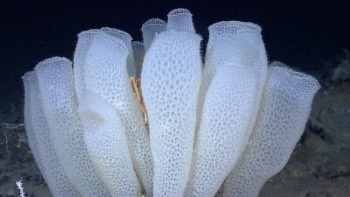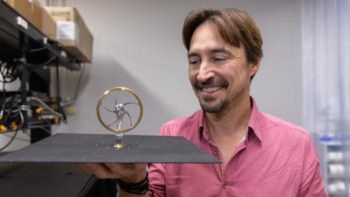
Tiny plastic particles are showing up in all sorts of places and have become a worldwide problem. Scientists are in the early stages of determining how microplastics, defined as particles smaller than 5 mm, enter the environment and are transported – often up to hundreds of kilometres – into previously pristine ecosystems. Researchers presented several observations on microplastic migration at the annual meeting of the American Geophysical Union (AGU) in San Francisco, California, in December.
Scientists group microplastics into three categories. The first are spherical microbeads, which typically come from facial cleansers and similar pharmaceutical products. The second are irregularly-shaped microfragments that have degraded from larger plastic objects. The third type are hair-like microfibres shed from synthetic fabrics.
Fields to mountains
Meredith Sutton, an undergraduate student at the University of Virginia, US, told researchers at the AGU meeting that microplastics are expected to be found downstream of urban centres. However, they are increasingly found downstream of agricultural areas as well. Sutton and her colleagues suspected that fertilizers made from sludge at wastewater treatment facilities might be a source, so they conducted a controlled experiment in the midwestern state of Nebraska. After rainfall, they found that much higher concentrations of microplastics (mainly fragments) ran into streams from fields treated with sludge-based fertilizers than from unfertilized control plots. The sludge treatment process does not screen for or filter out microplastics, Sutton said.
Julia Davidson of the University of Nevada–Reno, US, described finding microplastics on surface snow in remote areas of the Sierra Nevada mountains that straddle the California-Nevada border. Microfibers, especially, showed up 250 to 320 km from the nearest human habitation, and were probably borne there by wind. Davidson, an undergraduate, noted that microplastics do not degrade quickly in the alpine environment and would be difficult to remove due to their tiny size and the vast extent of the mountains. She also pointed out that the Sierra Nevada snowpack is a major source of drinking water for humans and animals. The health effects of microplastics, she said, are not yet known.
According to Davidson, hers is the second study of microplastics in snow. Another, from earlier in 2019, found particles in both the Alps and the Arctic. Both studies suggest that microplastics are widespread and that particles are travelling long distances, Davidson said.
Coming out in the wash
Plastic-based microfibres enter the environment whenever synthetic fabrics are laundered, but especially when detergents are used. According to Emmerline Ragoonath-De Mattos, an undergraduate at Columbia University, US, who conducted a study at Columbia’s Lamont-Doherty Earth Observatory, the drying part of the cycle contributes the most microfibres. The Columbia study found both fibres and fragments in zooplankton – a food source for fish – in Long Island Sound, which lies east of New York City and downstream of wastewater treatment facilities.
Other research projects described at AGU uncovered large accumulations of microplastics in Virginia floodplains, US; in Chinese mangrove estuaries; in Vietnam’s Mekong River and its delta; in almost all Japanese rivers; and in the ocean. The convener of the sessions, Monica Arienzo of the Desert Research Institute in Nevada, says that research into microplastics is in its infancy. “There are still a lot of questions about plastic sources, transport mechanisms, and deposition in the environment,” she told Physics World.
Abstracts for the AGU microplastics sessions may be read here and here.



